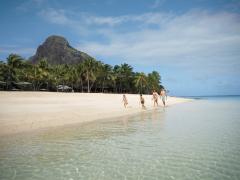The oil spill from the MV Wakashio, presently aground on a reef off Pointe d’Esny, near Mahébourg in Mauritius, is not large in terms of marine environmental events. But, according to BBC News, its location means the likely damage to the lagoons and reef areas is expected by scientists to be both significant and long-lasting. Satellite images show the oil slick on the water between the mainland at Pointe d'Esny and Ile-aux-Aigrettes.
The spill is near areas of important ecological significance and a wetland of international importance. The Mauritian marine environment is a high diversity hotspot including around 800 types of fish, 17 kinds of marine mammals and two species of turtles (UN Convention on Biological Diversity). Ecologically sensitive coral reefs in the lagoon are the biggest concern, as 25% of fish in the ocean depend on healthy coral reefs.
According to Mauritius Tourism, 570 cubic metres of oil and 150 tons of waste have already been skimmed and pumped out of the lagoons and all the on-board oil, fuel and other contaminants are expected to have been removed by Friday (August 14). International experts from France, Japan and the UN are assisting local teams. Japanese daily The Mainichi reports that Mauritius has declared a state of disaster and is seeking compensation from the owner of the vessel, Nagashiki Shipping.
With rough seas expected in the short-term, efforts are under way to contain the spill to the south-east region and away from the coastline of the rest of the island, which remains pristine. A massive clean-up operation, manned by local volunteers, has been launched on the shore.
The marine ecosystem surrounding Mauritius is a major pillar of Mauritian tourism, which is a big contributor to the economy, at 25% of GDP. Some scientists say the damage is likely to be permanent, while others say it will take 35 years to restore the damaged area













